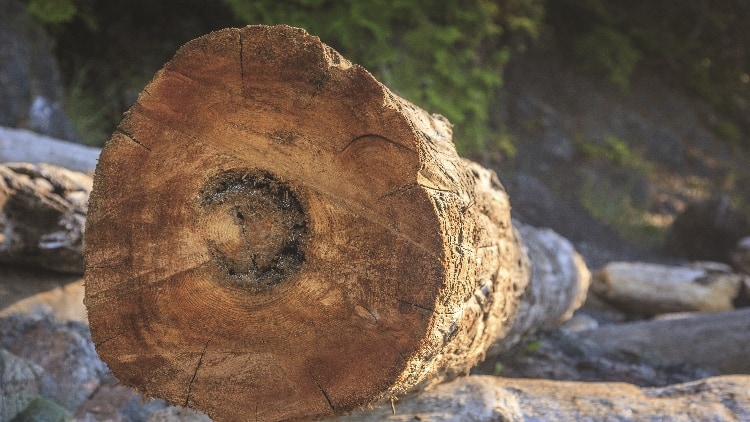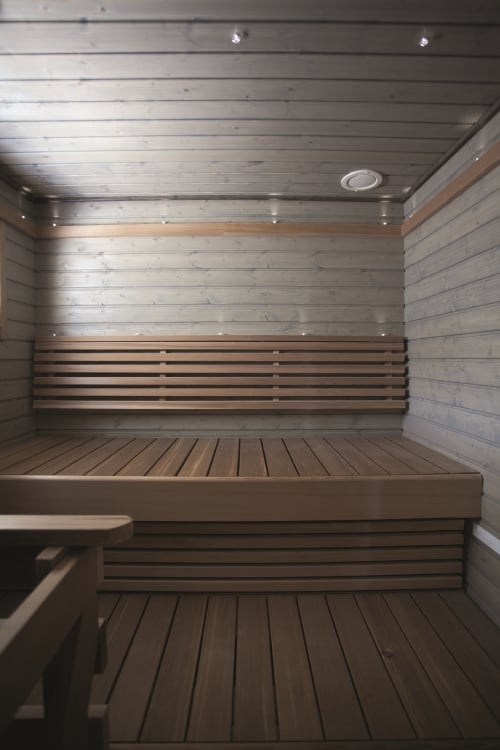Best… or best available?
Ted Riddle discusses the best timber options for building a sauna with, as well as the issue of availability, or lack thereof, of the best resources.
I regularly receive calls and emails from builders, designers, architects, engineers and even owner builders about various timber species and there suitability for particular uses. In February this year a member of BDA passed on my details to a former client who was looking for some timber information and the question turned back the clock 50 years to when I entered the timber industry.
The lady had a poolside cabana that she and her husband were converting into a sauna and she wanted to know what I thought was the best timber to line the interior.
In February 1966 I started work as a management trainee with a suburban timber merchant operation in Sydney’s northern suburbs; a family owned business. They were similar to the myriad other remanufacturing timber merchants working in the metropolitan areas of Australia at that time, not the big box warehouses of today where what you get is what they stock. They were real timber merchants and sold you what you wanted. There are still a few around but they are getting harder to find by the day.

The company had a full sawmill operation; 54 inch bandsaw, two 2-man circular saw benches, four moulding machines and a four sided planer, supported by a stiff leg and mobile crane, a couple of forklifts, three delivery trucks and a ute, with staff of about 40.
While not every timber merchant of the day had a joinery shop we had a large work space above the main mill where we employed three joiners, a foreman joiner and two apprentices; a great sideline for a timber operation as it gave you volume demand for many of the joinery lines carried in our sales racks that were often slow movers but essential in the complex range of cottage building we really had to have in stock.
The bread and butter of the joinery business and of all similar operations, whether tied to a timber merchant or not, was window frames, sashes and door sets, although we made a full range of products including staircases, cabinet making, wood turning, specialty furniture and even custom made door handles. Customers could give us the plans or the concept and our team could generally get the job done.
When I arrived on the scene in the mid-60s the pressure was certainly on the joinery operation as aluminium windows and doors were starting to make inroads in the market and eventually many straight joinery businesses would fold as the bread and butter product slowly declined. Some timber merchants converted to aluminium joinery, there was still an element of timber use, in the revels, and it did provide them with a replacement product range and ongoing sales. Others tried to run the two operations concurrently but the timber joinery slowly faded as demand and returns made it impractical.
Our family-based company were steadfastly opposed to aluminium joinery and decided to look elsewhere for a replacement bread and butter product range to keep their joinery business operational. One of the directors had just returned from a timber fact finding trip to America where he had seen the emergence of the ‘sauna bath’, certainly a high end market product that was consuming a lot of joinery grade timber in the US… but what was the potential in Australia?
We didn’t have to wait long to find out, our MD went off to Finland, signed an Australian distributorship license with a sauna heater manufacturer and we were in the sauna business.
In Scandinavia they used what is referred to as Swedish redwood (Pinus sylvestris), Scots pine to us, for the structure and lining of their ‘sauna baths’. In the US they had continued the usage of ‘redwood’. They preferred Californian redwood, firstly to continue with tradition (the yanks seem pretty strong on that) and secondly because the darker timber and high durability of Californian redwood made it very suitable to the high variable temperature range and the high water usage in cleaning the various internal components such as seating, floors, walls and doors.

I am not sure if our directors all agreed that redwood was the right species to use in Australia because it was certainly expensive and not a well known commercial species in our market, but the evidence of use in the US, coupled with the ‘up market’ appeal of a high end exclusive timber species made them push on and develop buying arrangements through a major US west coast timber supplier.
The cost to set up the business was high. We imported and stocked sauna heaters and other electrical and installation components, as well as large volume stocks of various sizes of redwood. Then there was the sauna marketing campaign, which included television, and away we went with what became a very good business decision.
As I saw all those thoughts flash through my mind when the lady asked me her question about lining a ‘sauna bath’ I wondered if my answer would be based on my past, possibly biased experience, or if I would be objective. My old company had made their decision based on giving their product an exclusive edge, although there was no doubt that Californian redwood was a high quality and very suitable species, much more so than the Scandinavian ‘Swedish redwood’, but was it really the best for that application?
The species I am referring to here as Californian redwood is Sequoia Sempervirens, and probably should be rightfully called coastal redwood as there are two species of redwood that grow in North America and both of them predominately in California from an area about half way between Los Angeles and San Francisco in the south to the Oregon border in the north.
Coastal redwood and giant redwood are both very unique species, both are now endangered, although since the 1950s when the US Forestry Service stopped the mass felling of coastal redwood, it is now successfully being managed with a lot of timber still being cut, predominately for the US market, I believe.
Coastal redwood are recorded as the world’s tallest trees, growing up to 115m high and the giant redwoods are the world’s largest by volume, with some growing to almost 100m high and 17m in diameter. Both species are highly durable with little shrinkage, expansion and degrade, making them perfect for use in high humidity applications, such as ‘sauna baths’.
Of the two species of redwood it is only the coastal that is now cut as timber, although I doubt that any of us could pick the difference, without the use of DNA technology, as both are red to reddish brown in colour. Very straight grained, the texture is fine with very little difference between earlywood and latewood keeping the growth rings very uniform in appearance.
One of the biggest problems to be overcome by any timber in a sauna bath is that it has to perform the task without the luxury of a protective coating. There are various species that work well as uncoated timber in many applications from marine decking to outdoor furniture. Such an example is teak, which is often used as boat decks, scrubbed and washed regularly, highly durable and robust. However the silica in the wood fibre and reverse grain would make it a poor substitute in a sauna where you need to worry about the possibility of light skin burns or skin irritations in the patchy roughness that can occur; many high durability timbers can silica and have reverse grain that furs up in high humidity situations, making them unsuitable.
In answer to my own thoughts, I have no doubt that having seen Californian redwood extensively used in sauna baths for a decade that it is the best species for that application, although current availability makes it an unlikely choice.
Supply has always been a problem with Californian redwood and availability has continued to decline, certainly in the last half of the 20th century, resource issues and environmental habitat restrictions have limited supply. We were also faced with reduced supply not long after making the decision to go down that path and often, in times of reduced availability, considered other species.
I well remember playing around with King William pine (Athrotaxis Selaginoides), a most beautiful Australian softwood species, endemic to Tasmania. It’s a little bit lighter in colour than redwood, has a few more problems with working properties too, but would have been a very good substitute if it weren’t for the fact it wasn’t available in the range of sizes and lengths. It’s a much smaller tree than the redwoods, and just as difficult to get regular supply.
The ‘go to’ alternative species, also from North America, was Western red cedar; the lack of consistent colour was always seen by the sales and marketing people in our company as the biggest impediment, same as the feedback we had from the US, but from a timber perspective the durability and working properties of Western red cedar versus redwood were almost the same. It’s a little more brittle than redwood and may have slightly more face checking in situ but given availability, certainly the most readily available species to perform the task.
I thought of all these points as I chatted with the lady asking the question; what is the best species to line our new sauna?
“Western red cedar”, I replied.
